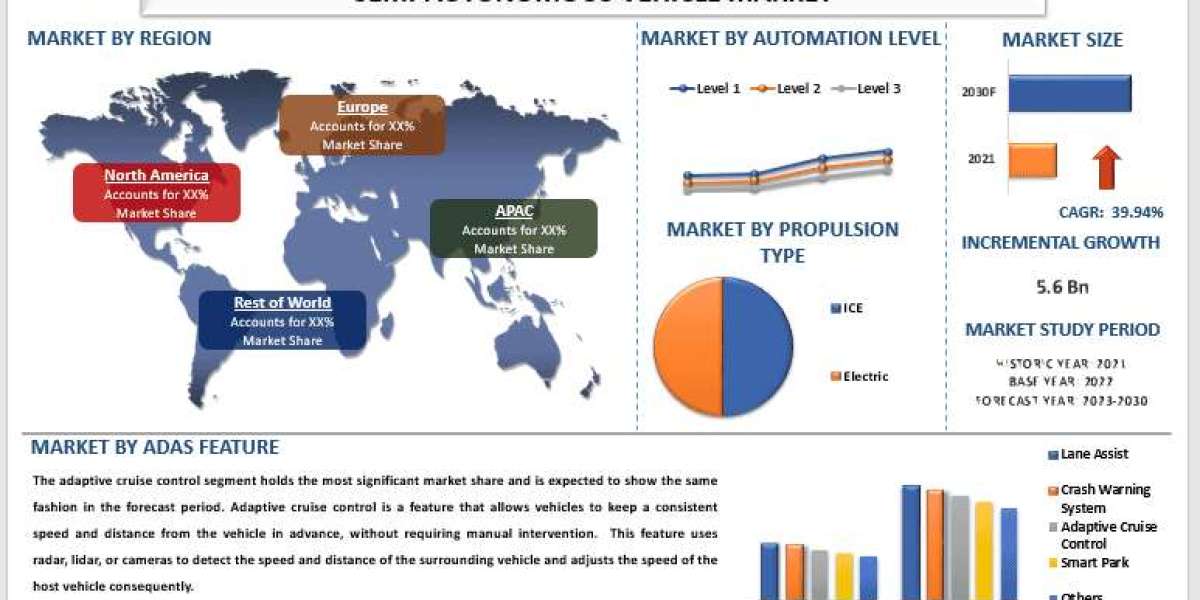According to a recent report by UnivDatos, The Semi-Autonomous Vehicle (SAV) Market was valued at USD 412 million in 2022 and is projected to grow at an impressive CAGR of 39.94% from 2023 to 2030.
The report segments the market by Automation Level (Level 1, Level 2, Level 3), Component (camera, LiDAR, radar, others), Propulsion Type (ICE, electric), ADAS Features (lane assist, crash warning system, adaptive cruise control, smart park, others), and Region/Country.
Market Opportunities
The rapid development of autonomous and semi-autonomous technologies is transforming the mobility sector, particularly ride-hailing services. Semi-autonomous vehicles promise enhanced passenger safety, optimized travel times, and greater convenience through advanced driver assistance systems (ADAS) and AI-powered hazard detection.
Leading ride-hailing companies are investing heavily in SAV development. Notable moves include:
- Lyft selling its self-driving unit, Level 5, to a Toyota subsidiary for USD 550 million (April 2021).
- Uber selling its autonomous division to Aurora for USD 4 billion (December 2020).
Access sample report (including graphs, charts, and figures): https://univdatos.com/reports/semi-autonomous-vehicle-market?popup=report-enquiry
Key Market Segmentation Insights
- By Automation Level: Level 3 is expected to generate the highest revenue during the forecast period.
- By Component: Cameras dominate the market and are set to maintain their lead.
- By Propulsion Type: Electric SAVs currently lead and are projected to grow fastest.
- By ADAS Features: Adaptive cruise control holds the largest market share (2022).
Regional Outlook
- Asia-Pacific leads the market, fueled by its dense population, high accident rates, and growing need for road safety solutions.
- Human error accounts for 90% of accidents (WHO). SAVs reduce risks by managing critical driving functions like steering, acceleration, and braking.
- Technologies like Tesla’s Autopilot have demonstrated up to 35% crash risk reduction (NHTSA).
Technology Advantages
- Improved Visibility: Multi-sensor systems (cameras, radar, LiDAR) detect hazards more accurately than human drivers.
- Vehicle-to-Everything (V2X) Communication: SAVs share traffic and road condition data with other vehicles and infrastructure.
- Driver Monitoring: AI systems track driver fatigue and distraction to prevent accidents.
Regulatory Landscape
Governments worldwide are working to establish safety standards, testing frameworks, and public road deployment guidelines for SAVs. Rigorous safety certifications are critical for public trust and adoption.
Competitive Landscape
Key players include:
- General Motors
- Tesla
- And other major automotive and tech innovators
Recent Developments:
- March 2023 – GM introduced a USD 300K SAV system integrated with OnStar for real-time data.
- June 2023 – Tesla announced plans to license its Autopilot and Full Self-Driving (FSD) technologies to other companies.
Target Audience
- Automotive manufacturers & component suppliers
- Technology providers
- Insurance companies
- Policymakers & regulatory authorities
- Investors & venture capitalists
- Research and consulting firms
Contact Us:
Email - [email protected]
Website - www.univdatos.com



